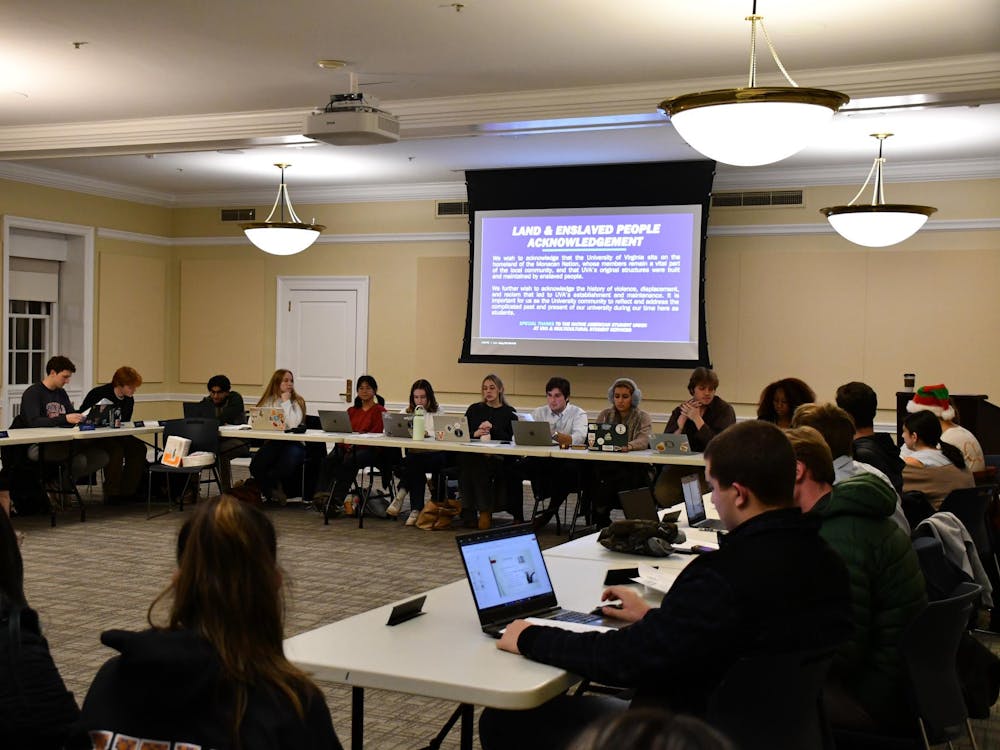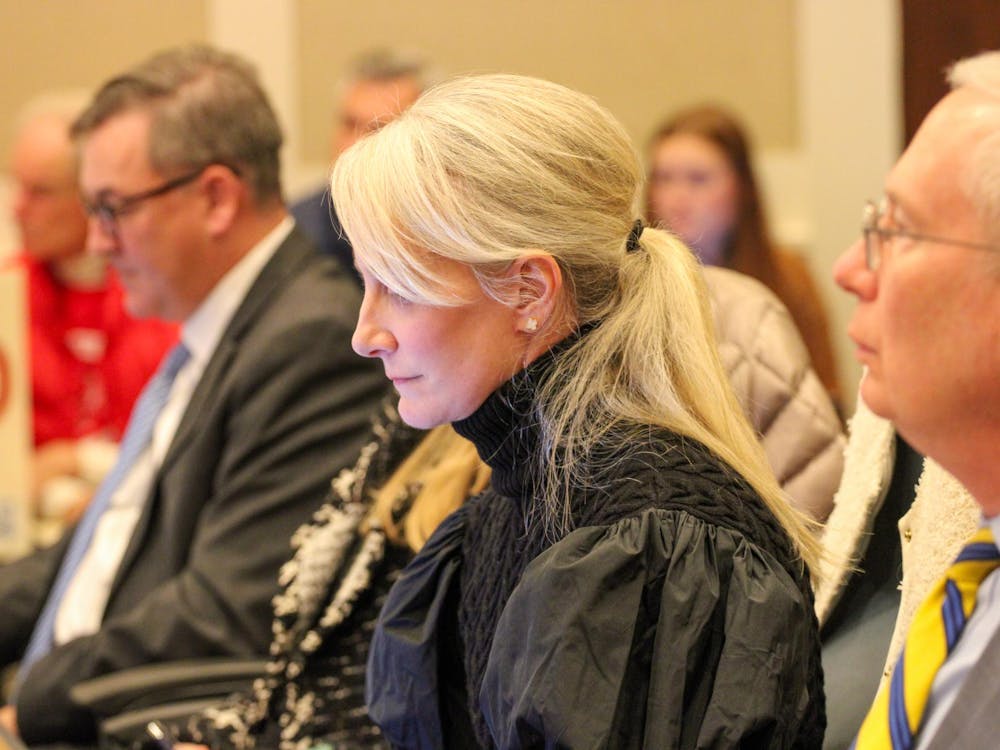The experience of living on the Lawn is different for everyone lucky enough to be chosen to live there. But one alumnus who attended the University during World War II, and still lives in Charlottesville today, has had an especially memorable relationship with the Academical Village.
"I have had a close association with the Lawn," Omer Allan Gianniny Jr. said.
When Gianniny graduated from McIntire High School in Charlottesville, the nation was in the middle of the Second World War.
"Uncertain of what the future would bring, I applied to U.Va. and was accepted," he said.
At the University, Gianniny studied mechanical engineering and participated in the Naval ROTC program. In the summer of 1943, the Naval ROTC "took over the Lawn," and second-year Gianniny, who had lived at home in Charlottesville during his first year, suddenly found himself living on the Lawn with his battalion.
"I had no thought that as a second-year student I would be living on the Lawn. But I was - as a second, third and fourth year student. Many of the student leaders were living on the Lawn and on the ranges, but they were housed and assigned just the way the rest of us were."
During his years at the University, Gianniny would spend eight months living on the East Lawn, eight months on the West Lawn, and one semester on the West Range. Meals were served in the refectory, then located in today's Garret Hall. Because of his involvement with the Naval ROTC program, Gianniny's days were highly structured.
"Things were relatively quiet because on the Lawn in those days, we had a curfew," he said. Calisthenics began on McCormick Road each morning at 6, so Gianniny and his classmates were expected to be in their beds by a reasonable hour. "Of course there were some who found ways around that - stuffing pillows and that kind of thing - but that was the rule," he added.
Life on the Lawn back then had its humorous moments.
"Well, off course there were some comical things," Gianniny recalls of his days. "They decided one summer that they were going to fertilize the Lawn, and rather than use the high-tech fertilizers they have nowadays, they used horse manure, and you can imagine how fragrant that was all spring," he laughed.
"Also, with the large number of students living on the Lawn, we had fairly heavy pressure on bathrooms. The Rotunda offered nearby sanctuary for some people. And there was a bathhouse on West Lawn that was built while we were students there. There was an executive officer [named Wunch] for Naval ROTC who wasn't especially liked, so the name of the bath house became Wunch Hall, in students' high level of humor."
Gianniny's recollections suggest that some aspects of University life are timeless. "I do recall that I had several roommates at different times, but there were at least two who were involved in the Sigma Chi fraternity," he remembers. "I wasn't particularly interested in that fraternity but I had to put up with many number of nights when the politicos from their fraternities wanted to 'do business' at late hours and we had to chase them out."
After Gianniny graduated from the University in 1947, he served in the Navy before returning to the University as a humanities faculty member in the Engineering School. Among other courses, Gianniny taught "Thomas Jefferson's Interest in Science and Technology" for nearly a dozen years.
He also taught a photography class, and it was during his time as a photography instructor that Gianniny first took an interest in the restoration of the Rotunda.
"Some students painted slogans and stories on the wooden fences surrounding the Rotunda which was going to be torn out completely leaving nothing but the shell," Gianniny said. "In Carolina Baby Blue someone had written, 'Coming Soon: Rotunda Burger,'" Gianniny, who was at a loss to explain the slogan, laughed. "I shot a whole set of slides blocking the entrance of the Rotunda."
When Professor Joesph Vaughan, the University's first provost, saw Gianniny's work, Vaughan invited Gianniny to bring his camera inside the Rotunda. Vaughan was himself an artist, having studied watercolor painting, and he too had been photographing the Rotunda. Now the two men together embarked on the project of documenting the Rotunda's restoration. They published a book of photographs entitled "Thomas Jefferson's Rotunda Restored: 1973-1976."
The project, which was sponsored by Monticello Foundation and the Press of University of Virginia successfully commemorated the monumental restoration effort.
"The work that Vaughan and I had done allowed us to talk about the restoration of the Rotunda with a number of groups," Gianniny said. Not only did the duo talk to the architects, builders and workmen involved in the project, they presented their work to the highway department and other groups as well.
Among Gianniny's collection are images of a multi-color striped Rotunda dome. The unconventional color scheme can be explained by the restoration process. Because there was no way precisely to determine what color Jefferson used to paint the Rotunda's dome, a committee was formed to compare green, blue and red stripes on the building. The resulting building was nicknamed the Harlequin Rotunda.
"The committee saw a range of colors - they tried to have some perspective on it," said Gianniny. Eventually, the committee agreed that Jefferson's original Rotunda likely had been white.
Having spent much of his life in the vicinity of the Academical Village, Gianniny has observed the Lawn in a range of conditions. "I've seen it in all its weather - from drought, dry, burned-up Lawn in the summer time to when students have burned off the grass from playing football - from snow in the winter time and in the spring and fall. Each of the seasons has just kind of had an excitement about it that I guess I have sort of enjoyed"






